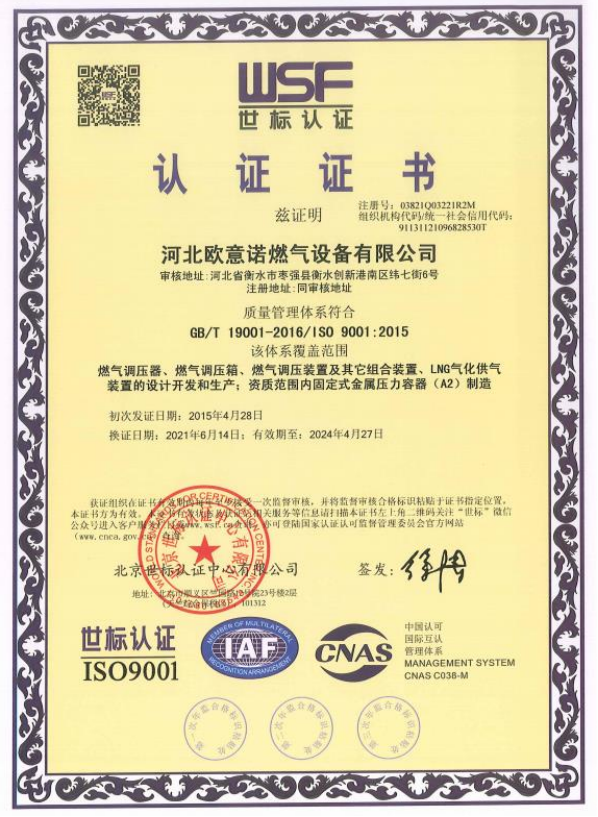
Dec . 05, 2024 10:32
Back to list
pneumatic valve
Understanding Pneumatic Valves Essential Components in Fluid Control Systems
Pneumatic valves play a crucial role in the modern industrial landscape, particularly in the realm of automated systems and machinery. These valves are integral components in controlling the flow of compressed air or gas in pneumatic systems, which are widely used in various applications, including manufacturing, construction, aerospace, and many others. Understanding the principles, types, and applications of pneumatic valves can provide valuable insights into their importance in fluid control systems.
At its core, a pneumatic valve is a device that regulates the flow of air or gas through a system. It is designed to control the pressure, direction, and flow rate of the pneumatic fluid, making it essential for a variety of applications that require precise movement and control. The basic operation of a pneumatic valve involves the opening and closing of an orifice through which the air or gas passes. This can be achieved manually or automatically, with automated systems relying on actuators and sensors for enhanced efficiency and accuracy.
There are several types of pneumatic valves, each with its unique functionality and application
. The most common types include1. Directional Control Valves These valves control the direction of the airflow in a pneumatic circuit. They can be normally open, normally closed, or capable of having multiple positions. Directional control valves are fundamental in applications where the movement of actuators or cylinders needs to be accurately controlled.
2. Pressure Control Valves These valves regulate the pressure within a pneumatic system. They ensure that the pressure remains within specified limits, protecting equipment and enhancing safety. Pressure relief valves, pressure regulators, and pressure reducing valves are all critical components in maintaining safe and efficient operation.
3. Flow Control Valves Flow control valves manage the rate of airflow in a system. By adjusting the size of the orifice, these valves can either accelerate or decelerate the movement of pneumatic actuators, ensuring that processes run smoothly and efficiently.
pneumatic valve

4. Shuttle Valves Used in applications requiring a manual switch between two sources of pressure, shuttle valves enable a pneumatic system to draw air from either source depending on availability. This versatility is particularly beneficial in systems requiring continuous operation.
5. Solenoid Valves These are electromechanical valves that use an electromagnetic coil to control the opening and closing of the valve. Solenoid valves are widely used in automation due to their speed and reliability, making them ideal for integrating with electronic control systems.
The applications of pneumatic valves are vast and varied. In manufacturing, they facilitate the operation of conveyor systems, robotic arms, and pneumatic presses. In the automotive industry, they control painting systems, assembly lines, and pneumatic tools. Additionally, pneumatic valves are crucial in the food and beverage sector, where they aid in processing, packaging, and quality control by ensuring the safe and effective handling of air and gases.
One of the significant advantages of pneumatic systems and valves is their ability to provide a clean and efficient method of operation. Unlike hydraulics, which rely on oil and can lead to spills and contamination, pneumatic systems use air as the primary medium, making them more environmentally friendly. Moreover, pneumatic systems are often simpler in design, easier to maintain, and more cost-effective in many applications.
However, it is essential to consider proper maintenance and care for pneumatic valves to ensure their longevity and optimal performance. Regular inspections, cleaning, and timely replacement of worn components play a vital role in preventing failures and ensuring the reliability of the pneumatic systems.
In conclusion, pneumatic valves are indispensable elements in modern fluid control applications. Their ability to regulate airflow, manage pressure, and facilitate automatic operations makes them vital in numerous industries. As technology advances and automation becomes increasingly prevalent, the significance of pneumatic valves will undoubtedly continue to grow, driving efficiency, safety, and innovation across various sectors. Understanding their functions, types, and applications will empower engineers and technicians to optimize their use and enhance system performance.
Next:
Latest news
-
Safety Valve Spring-Loaded Design Overpressure ProtectionNewsJul.25,2025
-
Precision Voltage Regulator AC5 Accuracy Grade PerformanceNewsJul.25,2025
-
Natural Gas Pressure Regulating Skid Industrial Pipeline ApplicationsNewsJul.25,2025
-
Natural Gas Filter Stainless Steel Mesh Element DesignNewsJul.25,2025
-
Gas Pressure Regulator Valve Direct-Acting Spring-Loaded DesignNewsJul.25,2025
-
Decompression Equipment Multi-Stage Heat Exchange System DesignNewsJul.25,2025

